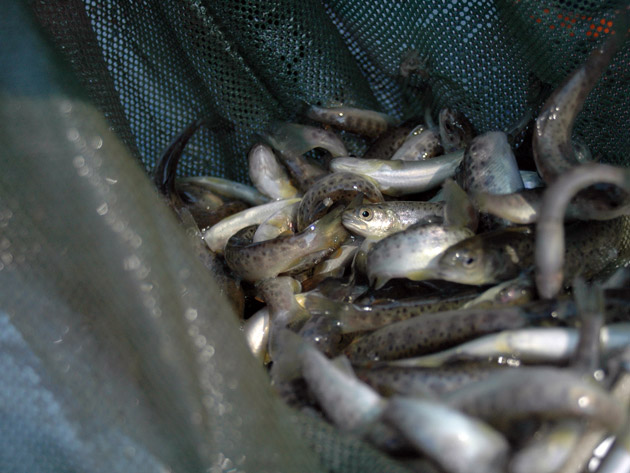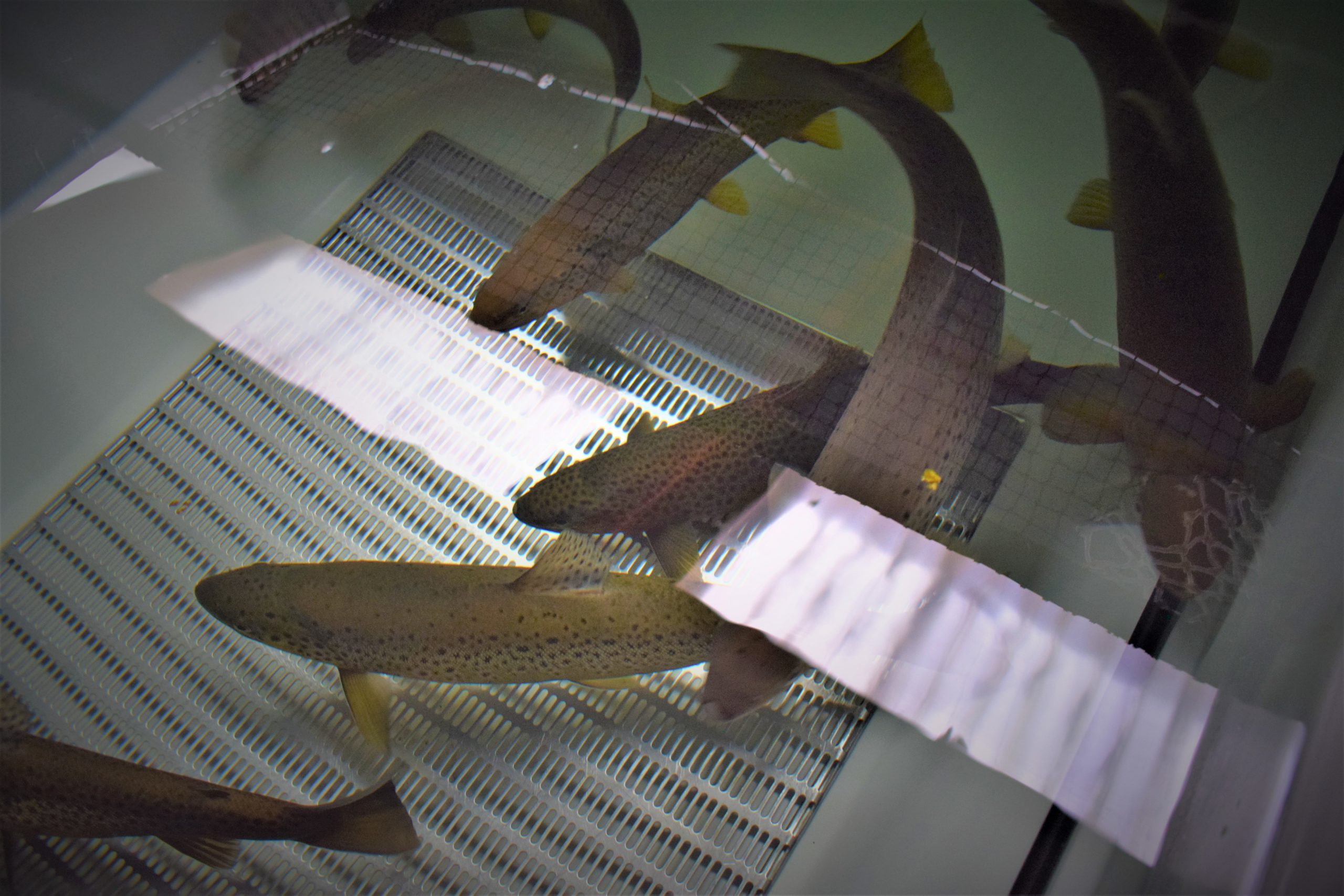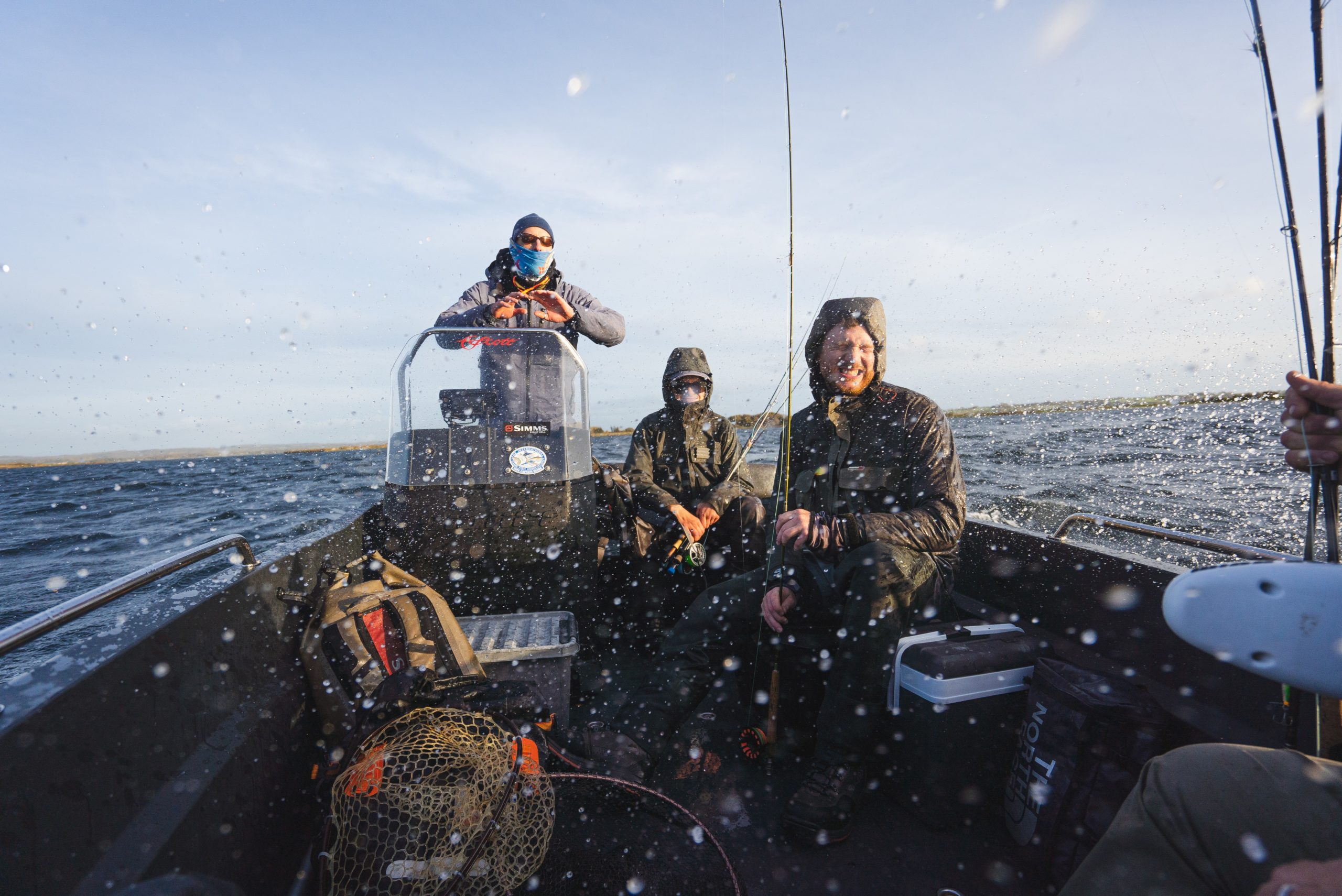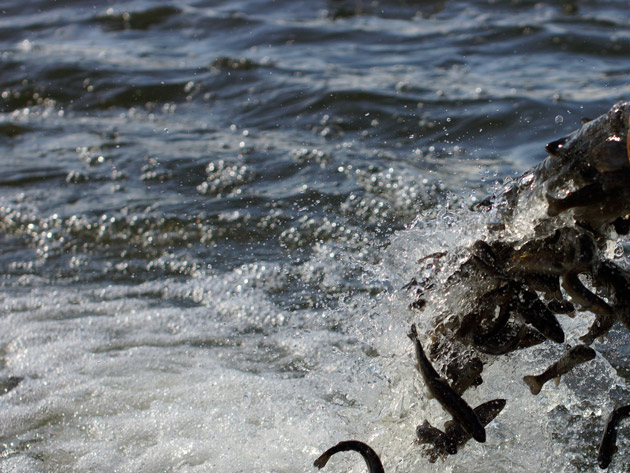
Restocking of Sea trout
More fish in our waters
Each year, hundreds of thousands of small juvenile trout’s, “smolts” are being released along rivers of Fyn. Here you can read more about why and how we do this.
The release of Smolt
The beautiful island of Funen, located in Denmark, is renowned for its picturesque landscapes, rich cultural heritage, and vibrant wildlife. Among its natural treasures is a thriving aquatic ecosystem that has long been cherished by both locals- and visiting fishermens alike. Every spring, a significant event take place that stirs excitement and hope for the future of Funen's waters: the release of smolt. In this page, we delve into the significance of this ecological endeavor, exploring how it contributes to the conservation and restoration of Funen's aquatic life.
Understanding Smolt: Smolt refers to the juvenile stage of certain migratory fish species, particularly salmon and trout. During this phase, these fish undergo a physiological transformation, adapting to the transition from freshwater to saltwater habitats. This critical period marks the start of their migratory journey to the open ocean, where they mature and eventually return to their natal rivers to spawn.

Local fish, in local waters
The release of smolt plays a vital role in the conservation and restoration of Funen's aquatic ecosystem. Over the years, various factors such as pollution, habitat destruction, and overfishing have taken a toll on the fish populations, including sea trout, in the region. By releasing smolt, conservationists aim to boost the numbers of these migratory fish, contributing to the recovery of their populations and the overall health of the ecosystem.
In 2021, As part of the Sea trout project, a group of interested parties set up a new sea-trout hatchery on Fyn, called Fyns Laksefisk (“Fyn’s Salmonids”). Sea trout which are caught by electro-fishing in the local rivers are brought here in the autumn. They are kept separate according to where on Fyn and the islands they are caught. This is very important, as the smolts that are later released, will be released in the same area, as where there “parents” where electro-fished 1.5 years earlier. This provides the best possible genetic suitability for the Fyn watercourses, with the motto “Funen fish from Funen waters”.
The large number of trout are more than just a desirable catch for anglers. They also help to strengthen the natural population. Today trout ascend 25 of the watercourses on Fyn. To ensure that the new fish passages function as intended, and to monitor the ascent of the sea trout, the County of Fyn has installed electronic fish counters at selected passages. The counters record the date and time when sea trout pass and whether they are moving up or downstream. They also record the length and height of the trout, which means the weight can be calculated fairly accurately. The counters show that large numbers of sea trout swim through the new passages to spawn, and studies further upstream show that the population of fry in the watercourse increases when fish obstacles are removed. The sea-trout has returned to Fyn.

Why release smolt? Natural and cultural impacts
Benefits for Funen's Aquatic Life: The introduction of smolt into Funen's waters provides several benefits for the local aquatic life. Firstly, it enhances the genetic diversity within the trout populations. Hence, when the fish are "made" at the "Fyns Laksefisk", "parent"-fish are used in the same way, as the fish would in the wild. We dont only collect the biggest trouts with the most eggs. All fish in all sizes are collected. This genetic diversity is crucial for their long-term survival, as it ensures the resilience and adaptability of the species to changing environmental conditions - just as they would in the wild. However, the survival rates of the hatchery are much much higher, than in the wild.
Moreover, the presence trout in Funen's rivers, streams and coast has far-reaching ecological effects. These fish act as keystone species, playing a pivotal role in maintaining the balance of the entire ecosystem. They serve as both predator and prey, regulating the population of smaller fish and invertebrates. Additionally, their nutrient-rich carcasses, after spawning, provide essential food sources for other wildlife and promote the growth of riparian vegetation.

Socioeconomic Impact
Beyond the ecological significance, the release of smolt also has a positive socioeconomic impact on Funen and its communities. Sea trout fishing is a popular recreational activity, attracting anglers from near and far. The restoration of healthy fish populations can help stimulate tourism, generate revenue, and support local businesses associated with the sportfishing industry. Moreover, the revitalization of the aquatic ecosystem enhances the overall quality of life for residents, providing opportunities for outdoor recreation and promoting a deeper connection with nature.
Overall
The release of smolt on Funen marks a significant step in the ongoing efforts to restore and conserve the island's aquatic ecosystem. By bolstering salmon and trout populations, this endeavor not only benefits the fish themselves but also contributes to the health and resilience of the entire ecosystem. Moreover, it holds promise for the economic development and recreational opportunities in the region. As we celebrate this milestone, let us continue to support and advocate for the conservation and preservation of Funen's natural wonders, ensuring a brighter future for both wildlife and people alike.

What can I do?
The money you pay for the fishing permit contributes to the restocking programme which regenerates the trout population on Fyn and in Denmark as a whole. Respecting the minimum size limit and protected areas and times, as well as acting with consideration both for nature and the other visitors to the coasts mean that you as an angler are playing a part in a larger process.

